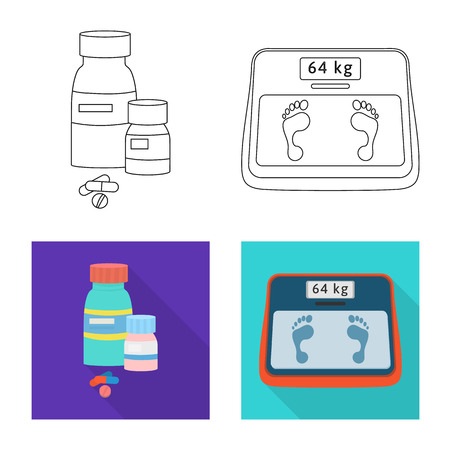1. Salicylic Acid: The Ultimate Exfoliator
When it comes to fighting acne, salicylic acid is one of the most effective ingredients you can have in your skincare routine. It’s a beta hydroxy acid (BHA) that penetrates deep into your pores to clear out excess oil, dead skin cells, and other debris that can cause breakouts. Unlike some harsher exfoliants, salicylic acid works gently but effectively to keep your skin smooth and blemish-free.
How Salicylic Acid Works
Salicylic acid is oil-soluble, which means it can reach deep inside clogged pores where water-based ingredients typically can’t. This makes it highly effective at breaking down blackheads, whiteheads, and other forms of acne. Additionally, it has anti-inflammatory properties that help reduce redness and swelling, making it an excellent choice for those dealing with inflamed pimples.
Benefits of Using Salicylic Acid
| Benefit | Description |
|---|---|
| Unclogs Pores | Dissolves excess oil and dead skin cells that can lead to acne. |
| Reduces Inflammation | Helps calm irritated skin and reduces redness from breakouts. |
| Prevents Future Breakouts | Regular use keeps pores clear and minimizes future acne formation. |
| Gently Exfoliates | Removes dead skin cells without excessive irritation or dryness. |
How to Use Salicylic Acid in Your Routine
You can find salicylic acid in many different skincare products, including cleansers, toners, serums, and spot treatments. If you’re new to using it, start with a lower concentration (0.5% to 2%) to see how your skin reacts before increasing usage. Here are some simple ways to incorporate it into your routine:
Daily Cleanser
A gentle face wash with salicylic acid can help keep your pores clean without over-drying your skin.
Toner or Serum
A toner or serum with salicylic acid can provide a more concentrated treatment, helping target stubborn breakouts.
Spot Treatment
If you have a few pimples, a targeted spot treatment with salicylic acid can help reduce their size and redness overnight.
Things to Keep in Mind
- Start Slowly: If you have sensitive skin, begin by using salicylic acid every other day to avoid irritation.
- Use Sunscreen: Since salicylic acid exfoliates the skin, it can make you more sensitive to the sun. Always apply sunscreen during the day.
- Avoid Overuse: Too much salicylic acid can lead to dryness or peeling. Balance it with hydrating ingredients like hyaluronic acid or ceramides.
If youre struggling with acne, adding salicylic acid to your routine can be a game-changer. With consistent use, it helps keep your pores clear, reduces inflammation, and prevents future breakouts—making it an essential ingredient for anyone dealing with acne-prone skin.
2. Benzoyl Peroxide: The Bacteria Fighter
Benzoyl peroxide is one of the most effective ingredients for fighting acne. It works by targeting acne-causing bacteria, reducing inflammation, and preventing future breakouts. If youre struggling with persistent pimples, this ingredient might be exactly what you need in your skincare routine.
How Benzoyl Peroxide Works
This powerful antimicrobial agent penetrates deep into the pores to eliminate Propionibacterium acnes, the bacteria responsible for breakouts. Unlike other treatments that only reduce surface oil, benzoyl peroxide actively destroys bacteria while also helping to clear clogged pores.
Benefits of Benzoyl Peroxide
| Benefit | Description |
|---|---|
| Kills Acne-Causing Bacteria | Destroys bacteria deep in the pores, reducing active breakouts. |
| Reduces Inflammation | Helps calm redness and swelling associated with acne. |
| Prevents Future Breakouts | Keeps pores clear to stop new pimples from forming. |
| Works on Multiple Acne Types | Effective for whiteheads, blackheads, and inflammatory acne. |
How to Use Benzoyl Peroxide Safely
Benzoyl peroxide comes in different strengths, typically ranging from 2.5% to 10%. If youre new to this ingredient, start with a lower concentration to minimize irritation. Here are some key tips for using it effectively:
- Start Slow: Apply once every other day to see how your skin reacts before increasing usage.
- Avoid Overuse: Too much benzoyl peroxide can cause dryness and peeling. Stick to a pea-sized amount.
- Moisurize Well: Since it can be drying, follow up with a hydrating moisturizer.
- Sunscreen is Essential: This ingredient can make your skin more sensitive to the sun, so always wear SPF during the day.
- Avoid Mixing with Certain Ingredients: Do not use benzoyl peroxide at the same time as vitamin C, as they can cancel each other out.
Benzoyl Peroxide vs. Other Acne Treatments
If youre wondering how benzoyl peroxide compares to other popular acne-fighting ingredients, heres a quick breakdown:
| Treatment | Main Benefit | Pore Penetration | Sensitivity Risk |
|---|---|---|---|
| Benzoyl Peroxide | Kills acne-causing bacteria | Poor-to-moderate (stays on surface) | Mild-to-moderate dryness & irritation |
| Salicylic Acid | Cleans out clogged pores & exfoliates dead skin cells | Poor-to-deep (penetrates oil glands) | Mild dryness & sensitivity possible |
| Retinoids (e.g., Adapalene) | Smooths skin texture & increases cell turnover | Poor-to-deep (affects skin renewal process) | Mild-to-severe irritation if used excessively |
| AHA/BHA (Glycolic/Lactic Acid) | Chemical exfoliation & brightening effects | Poor-to-moderate (surface-level exfoliation) | Mild stinging & dryness possible |
Benzoyl Peroxide: Is It Right for You?
If you have mild to moderate acne and tolerate stronger treatments well, benzoyl peroxide could be an excellent addition to your skincare routine. However, if you have very sensitive or dry skin, consider starting with a lower concentration or opting for alternative treatments like salicylic acid or niacinamide.
The key is consistency—when used correctly, benzoyl peroxide can significantly improve your skins clarity and reduce breakouts over time!

3. Niacinamide: The Skin Soother
When it comes to fighting acne while keeping your skin calm and healthy, niacinamide is a game-changer. This powerhouse ingredient is a form of vitamin B3 that offers multiple benefits for acne-prone skin.
How Niacinamide Helps with Acne
Niacinamide works in several ways to combat acne and improve overall skin health:
| Benefit | Description |
|---|---|
| Reduces Redness & Inflammation | Niacinamide has anti-inflammatory properties that help soothe irritated skin and minimize redness caused by breakouts. |
| Regulates Oil Production | By balancing sebum levels, niacinamide helps prevent excess oil buildup, reducing the chances of clogged pores and breakouts. |
| Strengthens the Skin Barrier | This ingredient reinforces the skin’s protective barrier, making it more resilient against environmental stressors and bacteria that contribute to acne. |
| Evens Out Skin Tone | Regular use of niacinamide can fade post-acne marks and hyperpigmentation, promoting a clearer complexion. |
How to Use Niacinamide in Your Routine
You can find niacinamide in various skincare products like serums, moisturizers, and toners. For best results:
- Use a serum: A niacinamide serum with a concentration of 2-10% is ideal for daily use.
- Apply after cleansing: After washing your face, apply niacinamide before heavier creams or oils.
- Pair with other ingredients: Niacinamide works well with hyaluronic acid for hydration and zinc for extra oil control.
- Avoid mixing with vitamin C: Some formulations may not work well together, so apply them at different times if needed.
The Bottom Line
If you’re dealing with acne and want an ingredient that soothes irritation while strengthening your skin, niacinamide is a must-have. It’s gentle enough for daily use and provides long-term benefits for a healthier complexion.
4. Retinoids: The Cell Turnover Booster
Retinoids are powerful Vitamin A derivatives that help accelerate skin renewal, prevent clogged pores, and improve overall skin texture and tone. They are widely recognized as one of the most effective treatments for acne due to their ability to promote faster cell turnover and reduce inflammation.
How Retinoids Work
Retinoids work by increasing the rate at which your skin sheds dead cells and generates new ones. This process helps prevent pores from becoming clogged with oil and debris, reducing the chances of breakouts. Additionally, retinoids stimulate collagen production, improving skin elasticity and minimizing post-acne marks.
Types of Retinoids
There are different types of retinoids available, ranging from over-the-counter options to prescription-strength treatments. Below is a comparison of common retinoids used in acne treatment:
| Type | Strength | Common Uses |
|---|---|---|
| Retinol | Mild | Over-the-counter option for beginners |
| Adapalene (Differin) | Moderate | Available OTC and prescription; great for acne-prone skin |
| Tretinoin (Retin-A) | Strong | Prescription-only; treats moderate to severe acne |
| Isotretinoin (Accutane) | Very Strong | Oral medication for severe cystic acne |
How to Use Retinoids Safely
If youre new to retinoids, its important to start slowly to minimize irritation. Here are some tips for using them effectively:
- Start with a lower concentration: If you’ve never used retinoids before, begin with an over-the-counter product like retinol or adapalene.
- Use it at night: Retinoids can make your skin more sensitive to sunlight, so apply them before bed.
- Apply a pea-sized amount: A little goes a long way—using too much can cause excessive dryness and irritation.
- Moisturize generously: Retinoids can be drying, so pair them with a good moisturizer to keep your skin hydrated.
- Wear sunscreen daily: Since retinoids increase sun sensitivity, always use SPF during the day.
- Be patient: It can take several weeks to see noticeable improvements, so stay consistent with your routine.
Who Should Avoid Retinoids?
While retinoids are highly effective, they may not be suitable for everyone. If you have extremely sensitive skin or conditions like eczema or rosacea, consult a dermatologist before using them. Pregnant or breastfeeding individuals should also avoid certain retinoid formulations due to potential risks.
The Bottom Line on Retinoids for Acne
Retinoids are a game-changer for acne-prone skin, helping to clear breakouts, refine texture, and boost overall skin health. When used correctly and consistently, they can be one of the most effective ingredients in your skincare routine.
5. Tea Tree Oil: The Natural Alternative
Tea tree oil is a powerful botanical ingredient known for its antibacterial and anti-inflammatory properties, making it an excellent natural alternative for treating acne. Unlike some harsh chemical treatments, tea tree oil helps reduce mild to moderate acne without causing excessive dryness or irritation.
How Tea Tree Oil Works
Tea tree oil contains a compound called terpinen-4-ol, which has been shown to effectively fight acne-causing bacteria. It also helps soothe inflamed skin, reducing redness and swelling associated with breakouts.
Benefits of Tea Tree Oil for Acne
| Benefit | Description |
|---|---|
| Antibacterial | Kills acne-causing bacteria, reducing breakouts. |
| Anti-inflammatory | Calms redness and swelling, making blemishes less noticeable. |
| Naturally Derived | Avoids the harsh side effects of synthetic chemicals. |
| Blemish Drying | Helps dry out pimples without over-drying surrounding skin. |
How to Use Tea Tree Oil for Acne
If using pure tea tree oil, always dilute it before applying to the skin to prevent irritation. A common method is mixing a few drops with a carrier oil like jojoba or aloe vera gel. Alternatively, look for skincare products that contain tea tree oil as an active ingredient, such as cleansers, spot treatments, or serums.
Cautions When Using Tea Tree Oil
- Avoid direct application: Always dilute tea tree oil before applying it to your skin.
- Patch test first: Test on a small area before widespread use to check for sensitivity.
- Avoid eye contact: Keep away from the eyes and sensitive areas to prevent irritation.
- Not for ingestion: Tea tree oil is toxic if swallowed—only use it topically.
The Bottom Line
If youre looking for a natural way to combat acne without harsh chemicals, tea tree oil can be a great addition to your skincare routine. With its antibacterial and anti-inflammatory properties, it effectively fights breakouts while being gentle on the skin when used properly.


